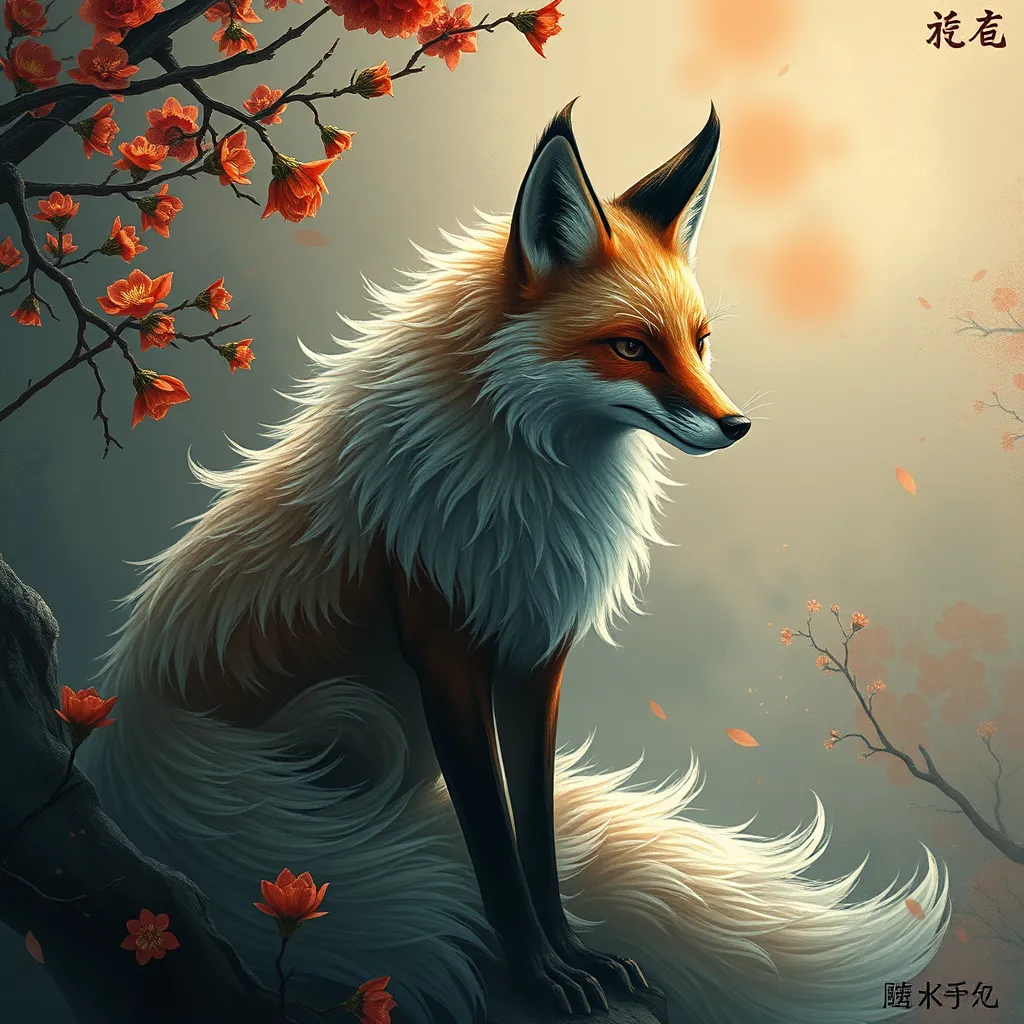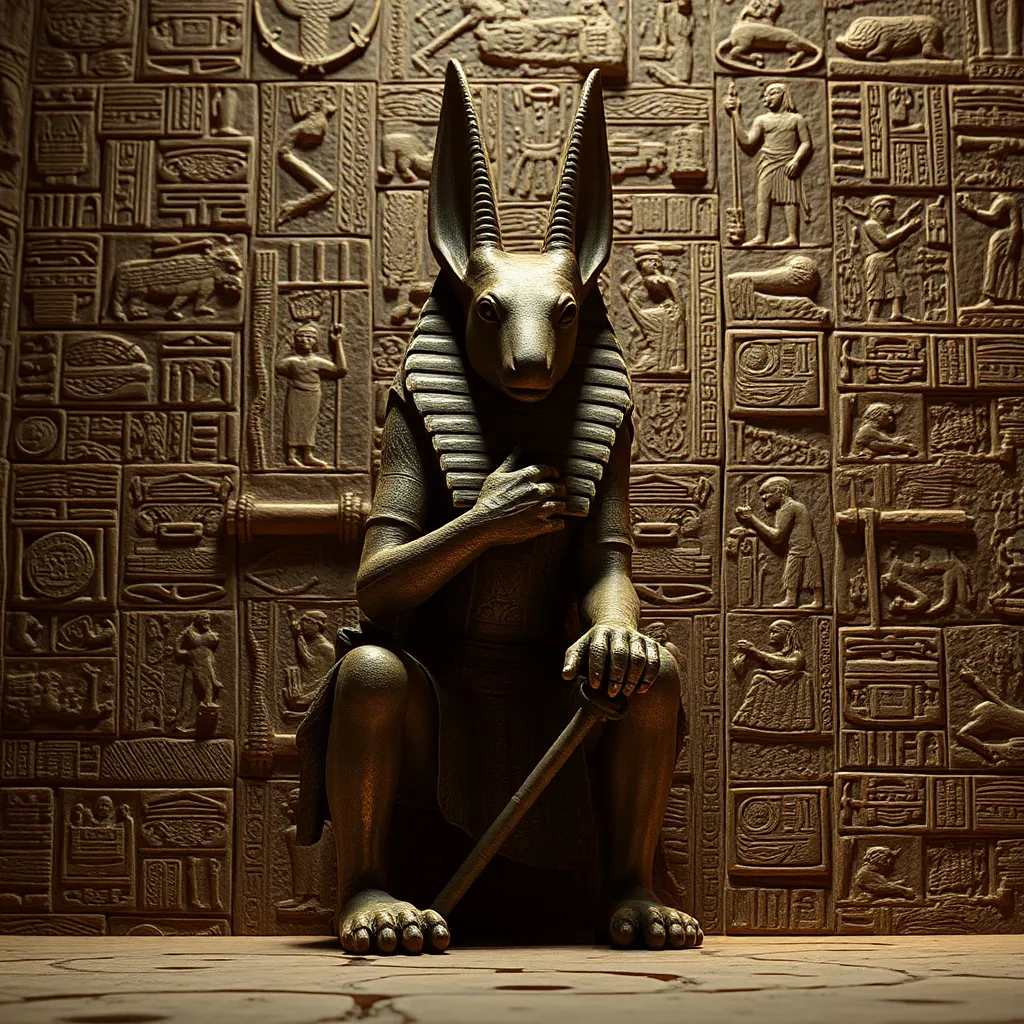The Fox Spirit’s Beauty: Exploring the Kitsune’s Role in Japanese Aesthetics
I. Introduction
The Kitsune, or fox spirit, holds a prominent place in Japanese mythology, symbolizing various aspects of life, nature, and the supernatural. Known for their intelligence, magical abilities, and connection to Inari, the Shinto deity of rice and agriculture, Kitsune have captivated the imagination of many throughout history. In Japanese culture, beauty is of paramount importance, influencing art, literature, and societal values. This article aims to explore the multifaceted role of the Kitsune in Japanese aesthetics, examining its mythological origins, artistic representations, and contemporary significance.
II. The Mythological Origins of the Kitsune
The story of the Kitsune dates back centuries, deeply rooted in Japanese folklore and Shinto beliefs. Initially, foxes were regarded as messengers of Inari, embodying both protective and transformative qualities.
A. Historical context of Kitsune in Japanese folklore
References to Kitsune appear in ancient texts, such as the “Nihon Shoki” and “Konjaku Monogatari,” where they are depicted as magical beings with the ability to shape-shift into human forms. Over time, the Kitsune evolved from a mere animal spirit to a complex figure representing both benevolence and malevolence.
B. Evolution of the fox spirit’s image over time
Throughout history, societal perceptions of the Kitsune have changed, reflecting cultural shifts in attitudes towards nature and spirituality. In earlier times, they were celebrated as protectors; however, later narratives portrayed them as cunning tricksters, capable of seduction and deception.
C. Symbolism of the Kitsune in Shinto beliefs
In Shinto, the fox is a symbol of fertility, prosperity, and protection. The belief in Kitsune as guardians of Inari shrines has further solidified their role in Japanese spirituality, intertwining beauty and reverence within the cultural landscape.
III. Aesthetic Representations of the Kitsune
The beauty of the Kitsune manifests in various artistic expressions, showcasing its significance in traditional Japanese art and literature.
A. Artistic depictions in traditional Japanese art
1. Ukiyo-e prints
Ukiyo-e, or pictures of the floating world, are woodblock prints that often feature scenes from folklore, including the Kitsune. These prints highlight the fox spirit’s grace and allure, capturing its beauty with intricate designs and vibrant colors.
2. Paintings and sculptures
Beyond prints, the Kitsune is also depicted in paintings and sculptures, often portrayed alongside Inari. Artists have historically utilized various styles to illustrate the fox’s enchanting beauty, emphasizing its ethereal qualities.
B. The Kitsune in literature and poetry
1. Classical literature references
Classical Japanese literature frequently references the Kitsune, portraying it as a complex character woven into tales of love, betrayal, and transformation. These narratives reflect the cultural fascination with the fox spirit and its inherent beauty.
2. Modern interpretations
In contemporary literature, the Kitsune has been reimagined, appearing in various genres from fantasy to romance. Modern authors continue to explore the duality of the Kitsune’s nature, often highlighting its allure and mystique.
IV. The Connection Between Kitsune and Femininity
The Kitsune is often associated with femininity, embodying ideals of beauty, seduction, and the complexities of womanhood.
A. Kitsune as a symbol of beauty and seduction
The aesthetic representation of the Kitsune often emphasizes its physical beauty and charm. In many stories, the fox spirit uses its allure to enchant and captivate, embodying the quintessential femme fatale.
B. The dual nature of the Kitsune: benevolent vs. malevolent
Kitsune are characterized by their duality; they can be nurturing and protective or deceptive and vengeful. This complexity adds depth to their representation in art and literature, allowing for diverse interpretations of beauty.
C. Gender dynamics in Kitsune representations
The portrayal of the Kitsune often reflects broader gender dynamics in Japanese culture, where femininity is celebrated yet simultaneously scrutinized. The fox spirit’s ability to navigate these dynamics speaks to its enduring significance as a symbol of beauty.
V. Kitsune in Contemporary Japanese Culture
As Japan modernizes, the Kitsune continues to influence contemporary culture, permeating various aspects of daily life.
A. Influence on modern fashion and design
Kitsune motifs have found their way into fashion, with designers drawing inspiration from the fox spirit’s elegance. Clothing lines and accessories often feature Kitsune imagery, blending traditional aesthetics with modern sensibilities.
B. Representation in popular media (anime, film, etc.)
The Kitsune frequently appears in popular media, particularly in anime and film. Characters inspired by the fox spirit often exhibit traits of beauty, cunning, and strength, resonating with audiences both in Japan and abroad.
C. Kitsune motifs in contemporary art
Contemporary artists continue to explore Kitsune imagery, incorporating it into installations, paintings, and digital art. These works often reflect modern themes, such as identity and transformation, while honoring traditional representations.
VI. The Aesthetic Philosophy Behind Kitsune Imagery
The aesthetic appreciation of the Kitsune is also rooted in deeper philosophical concepts that resonate within Japanese culture.
A. Concepts of wabi-sabi and impermanence
Wabi-sabi, the appreciation of beauty in imperfection and transience, aligns closely with the Kitsune’s symbolism. The fox spirit embodies the ephemeral nature of beauty, reminding us of the fleeting moments in life that are worthy of appreciation.
B. The interplay of nature and beauty in Kitsune symbolism
Kitsune are often depicted in natural settings, emphasizing the harmony between beauty and the environment. This connection reflects the Japanese belief in the importance of nature and its role in shaping aesthetic values.
C. Kitsune as a reflection of human emotion and experience
The diverse representations of the Kitsune serve as a mirror to human emotions, capturing the complexities of love, loss, and desire. This emotional depth enhances the beauty associated with the fox spirit, making it a relatable symbol in various contexts.
VII. Cross-Cultural Comparisons of Fox Spirits
While the Kitsune is unique to Japanese culture, it shares similarities with fox spirits in other cultures, contributing to a broader understanding of its significance.
A. Similarities and differences with fox spirits in other cultures
In many cultures, foxes are seen as tricksters or cunning beings. However, the specific attributes and narratives surrounding the Kitsune set it apart, showcasing a blend of beauty and spirituality that is distinctly Japanese.
B. The global fascination with the Kitsune
As global interest in Japanese culture grows, so too does the fascination with the Kitsune. This interest has led to a resurgence in the appreciation of its mythological roots and aesthetic significance.
C. The impact of globalization on the perception of the Kitsune
Globalization has allowed for the Kitsune to transcend cultural boundaries, influencing art and media worldwide. This cross-cultural exchange enriches the understanding of the Kitsune, allowing it to evolve while maintaining its core symbolism.
VIII. Conclusion
The Kitsune, with its rich mythological background and aesthetic significance, remains a powerful symbol within Japanese culture. Its representation of beauty, duality, and transformation resonates deeply with contemporary society, ensuring its relevance in modern culture. As we continue to explore the beauty of the fox spirit, we gain insights into the complexities of cultural identity and the enduring allure of the Kitsune.




